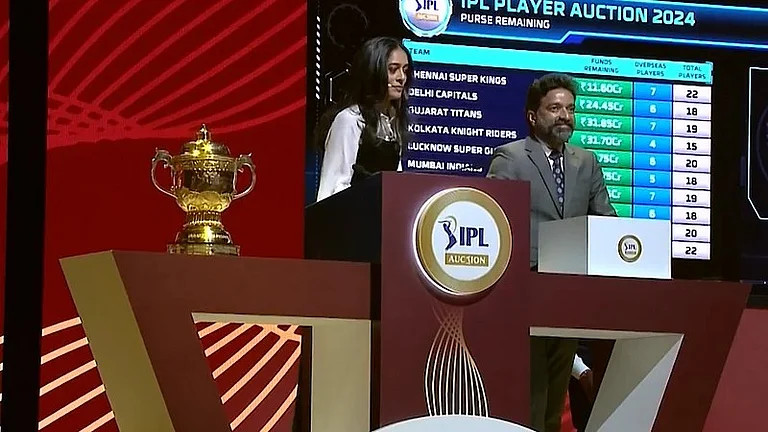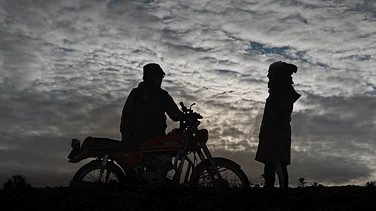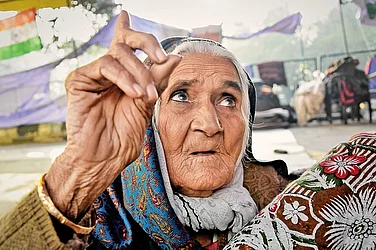Hindu mythology and Indian cinema share a mother-son relationship: the former produced the latter. In 1910, at a Christmas cinema show, Dadasaheb Phalke watched Life of Christ (1907). Before he reached home, an idea solidified into a resolve: making a movie on Lord Krishna. Even though it didn’t materialise, he persisted with a mythological, Raja Harishchandra (1913), for his debut.
Four years later, he found his biggest success in Lanka Dahan, where an effeminate waiter, Anna Salunke, played both Rama and Sita. The movie ran from seven in the morning to twelve in the night at the West End Cinema in Bombay, where devotees from nearby towns and villages flocked to the theatre; in Poona, the crowds bashed against the doors; in Madras, the earnings had to be taken in a bullock cart protected by cops. Such zeal, intensifying in the subsequent decades, reinforced a crucial fact about cinema: that it performed, according to professor John Lyden, a “religious function”.
“Cinema has a mystical quality,” writes film scholar Rachel Dwyer in Filming the Gods, “in that we may not understand films but we feel them and respond to their emotions.” So a myth-making art form had to meet the literal myths, defying logic, deifying actors, sanctifying beliefs. Only a mythological could compel Mohandas Gandhi to watch his only film, Ram Rajya (1943). Such dramas remained a prominent presence in Hindi cinema post-independence, but they truly came to the fore in the late ’80s, when the serials Ramayana and Mahabharata aired on Doordarshan. Many Bollywood filmmakers, too, have adapted the Ramayana and derived inspiration from it, turning Sita into a literal and a metaphorical figure, showing the varied possibilities of female divinity in an industry dominated by men.
Consider Khal Nayak (1993). Suffused with references to the Ramayana, it posits fascinating interpretations of Sita: bold, cunning, conforming. Ganga (Madhuri Dixit), a cop accustomed to swearing, impersonates a courtesan to trail the Ravan-like Ballu (Sanjay Dutt), notices his (latent) humanity, and tries to change him. Yet when he expresses his love for her, she says, “Main kisi aur ki ho chuki hoon [I belong to someone else]”, as if objectifying herself. When she faces a trial for betraying the state (and her partner), it’s a man, Ballu, who vouches for her ‘purity’ in the courtroom.

Sooraj Barjatya’s Hum Saath Saath Hain (1998) adapts the Ramayana in the mould of a family drama. Its Sita (Tabu) is so devoid of agency, wit, and personality (and at times a literal voice) that she elicits nothing but pity. Barjatya’s films—revering Hindu marriages, filial duties, patriarchal expectations—present a cheery version of the Hindu Rashtra. So the movie informs us, more than once, that even though born and bred in pardes, Sadhana hasn’t forgotten her sanskaar. She never acts, questions, or retaliates. (She’s so docile that her epitaph could have read: Born. Smiled. Died.)
Such portrayals of Sita abound in Bollywood films. They depict her like a traditional heroine: diminishing her identity and tying her essence to a man. In Adipurush, Janaki (Kriti Sanon) hardly utters a line without invoking her husband (Prabhas). She continues to talk about his bravery, even when she is in danger. Even in RRR (2022)—an inventive adaptation, where Hanumana saves a kidnapped Rama—the portrayal of Sita (Alia Bhatt) remains as muted. The symbolic Sitas in Kabhi Khushi Kabhie Gham and Gadar (Kajol and Amisha Patel) are devoted figurines—the former just has a sense of humour.
Mani Ratnam and Rajkumar Santoshi, though, have challenged themselves as well as their audiences. Raavan’s Ragini (Aishwarya Rai Bachchan) is fierce, fearless, relentless; she rebuffs, challenges, threatens. When her captor’s (Abhishek Bachchan) backstory moves her, she prays in front of a Vishnu statue, asking for ruthlessness, not compassion. When she meets her husband Dev (Vikram), a cop, she asks him a question that cuts deeper than it seems: “Did you come here for me or for him?” And when Dev questions her character and demands a polygraph test, the lines between Rama and Ravana begin to blur.
At one point in Lajja (2001), Janaki (Madhuri Dixit), a theatre actor, enacts a scene from the Ramayana. Her boyfriend Manish (Samir Soni), playing Rama, has dumped her minutes before the play, calling her promiscuous. As his Rama continues to malign Sita, Janaki recognises herself in the deity—her suffocation, her humiliation, her frustration—and sees Rama in her partner: his arrogance, his ego, his entitlement. “Was it my fault that Ravana kidnapped me?” she asks him. “I want an answer: Do you love me?” He talks about upholding society’s ... “I’ve married you,” she interrupts him. “Not society.” A defiant Sita makes the audience restive. But she doesn’t care. Dancing in a party of one, she unleashes a tandav. “Are you with me? Answer me. Tell me.” When Lakshmana coaxes her into giving the agni pariksha, she snaps, “Aye, I don’t want to prove, disprove anything. Especially to someone who doesn’t believe me, doesn’t trust me. And since we’ve both stayed away from each other, we’ll both step into the fire.”

In current times, such scenes would be snuffed out. Or many more in Nina Paley’s Sita Sings the Blues (2008), an animated musical, which tells the stories of Rama and Sita intercut with the filmmaker’s own souring romance. Three shadow puppets provide crucial context (and consistent humour). Here’s how one of them paraphrases Sita’s threat: “You still have one last chance, Ravana, because once Rama comes here, you know, your ass is grass.”
Dignifying Sita’s perspective, it foregrounds several aspects of the epic ignored by many Indian directors. After the Lanka war, Sita steps into the fire to prove her purity, then endures another humiliation when Rama, hearing rumours about her in his kingdom, banishes her to the forest. A pregnant Sita, escorted by Lakshmana, makes the long journey, spilling rivers of tears over a literal river. In the forest, she continues to pine for her husband, gives birth to Lava and Kusha who, via Valmiki, learn to sing songs ‘praising’ Rama: “Sing his love, sing his praise/ Rama set his wife ablaze. Got her home, kicked her out/ To allay his people’s doubt.”
An obvious question: How can the Sitas of Adipurush and Hum Saath Saath Hain differ so much from the ones in Lajja and Sita Sings the Blues? Its answer prompts another question: What do we talk about when we talk about the Ramayana: Valmiki’s (the original) or Tulsidas’ (a 16th-century adaptation)? Have countless Bollywood filmmakers prioritised one version over the other, shrinking and obscuring Sita? The latter, written in accessible Awadhi, outweighs the former in popularity and reach. They also have crucial differences, such as Valmiki’s Ramayana not mentioning the Lakshmana Rekha. The 16th century version also depicts a much more hagiographic portrait of Rama as compared to the original.
“Unlike Rama, whose divinity increases after the Valmiki text,” writes Wendy Doniger, a renowned Indologist, in The Hindus: An Alternative History, “Sita was a goddess before Valmiki composed the story.” Valmiki does “not erase” her divinity but “largely ignores it”, adds Doniger, whereas Rama, a “god in the making”, has “moral imperfections” that “future generations” scurry to erase. “The two meet in passing,” she concludes, “like people standing on adjacent escalators, Rama on the way up, Sita on the way down.” This compulsion to favour one character in lieu of another arises from the very essence of the epic. “Rama’s mistreatment of Sita,” explains Doniger, “creates a problem—the justification of Rama—that inspires later Ramayanas to contrive ingenious solutions.”
Sometimes what we read in a text—or what text we choose to read—says as much about the piece as it does about ourselves. So you wonder what would have Hum Saath Saath Hain’s happy family looked like had Barjatya preferred Valmiki over Tulsidas? Because, according to Doniger’s translations, the filial relationships in the original are far more complex. Here’s how Lakshmana reacts when he finds out about his brother’s banishment: “The king is perverse, old, and addicted to sex, driven by lust [2.18.3]”—referring to Kaikeyi’s “sexual blackmail”. Rama is as scathing: “I think kama is much more potent [for him] than artha or dharma. For what man, even an idiot like father, would give up a good son like me for the sake of a pretty woman? [2.47.8-10]”
When Sita hears Rama’s wail in the woods, she urges Lakshmana to help his brother. He refuses, recognising the trick, saying Rama can take care of himself. “You want him to perish, Lakshmana, because of me,” she says. “For with him gone, what could I, left alone, do to stop you from doing the one thing you came here to do? I would not even touch another man, not even with my foot [3.43.6-8, 20-24, 34].” “Damn you, to doubt me like that,” Lakshmana replies, “always thinking evil of others, just like a woman [3.43.29].” Valmiki’s Sita, explains Doniger, is “not a doormat”. She even clashes with Rama on issues that probe his character. When they enter the forest, she asks him why he “carries weapons in this peaceful place”, translates Doniger, especially as he’s “adopted the attire (and, presumably, the lifestyle and dharma) of an ascetic”. He says his weapons will protect Sita and other defenceless animals. In an “impassioned discourse against violence”, Sita tells him that she fears “he is by nature inclined to violence” and just carrying the weapons “will put wicked thoughts in his mind [3.8.1-29]”.
But as times changed, so did the conception of Sita. The “later Brahmin imaginary” diluted her “dark, deadly aspect,” writes Doniger, “and edited out her weakness to make her the perfect wife, totally subservient to her husband. How different the lives of Indian women would have been had Sita, as she is actually portrayed in Valmiki’s Ramayana (and some other retellings), been their official role model?”


























